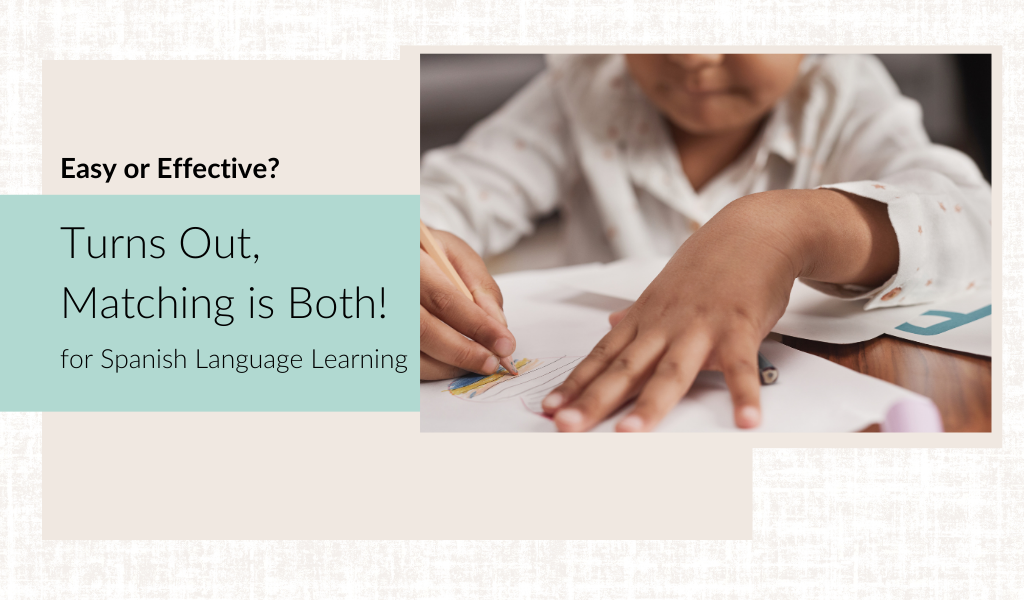Let’s talk about one of my favorite tools for low-stress language learning—matching activities. Whether you’re working with early language learners or simply want to build confidence, matching activities are perfect for reinforcing vocabulary without the pressure of more advanced tasks. Using my Spanish Geography Matching Activity, you can scaffold learning and gradually build toward speaking practice, all while making students feel confident and supported.
So, what makes matching activities so effective? Let’s dive into the benefits and explore how to scaffold this worksheet into a full-class lesson with speaking practice, small group games, and formative assessments.
Why Matching Activities Boost L2 Learning
Scaffolded Lesson Plan: From Matching to Speaking
Let’s break down a scaffolded lesson plan using the Spanish Geography Matching Activity. The goal is to get students comfortable with matching words and images, and by the end of the lesson, have them speaking those words confidently.
Objective: Students will learn and practice Spanish geography vocabulary through matching activities and speaking practice. By the end of the lesson, they will be able to match vocabulary to pictures and speak basic geography terms.
Materials:
- Spanish Geography Matching Activity
- Visual aids (flashcards or pictures of geographical features)
- Whiteboard for modeling vocabulary
Warm-Up (5-10 mins):
Introduce students to the geography vocabulary using visual aids. Show flashcards or images of places like el río (the river) or la playa (the beach). Say each word aloud and have students repeat after you. This helps them connect the word with the visual image from the start.
Scaffolding Phase 1 – Guided Matching (10-15 mins):
- Teacher Modeling: On the whiteboard, draw simple pictures of geographical features and write the corresponding Spanish word next to each one. Have students match the words to the images as a class by raising their hands or pointing to the correct image when you say the word.
- As they trace, encourage them to say the words out loud. This builds their confidence while reinforcing fine motor skills and pronunciation.
- Advanced Option: For students who have already learned Spanish colors, provide a color-coding activity. Ask them to connect the Spanish word to the correct picture and English translation using different colored pencils. This visual connection helps solidify vocabulary.
Scaffolding Phase 2 – Small Group Work (10-15 mins):
- Partner Speaking Activity: Pair up students and have them practice speaking and listening with the matching activity. One student says the word aloud (e.g., “El río”), and their partner must point to the correct word on their worksheet. Then, they switch roles. This reinforces listening comprehension and encourages them to use the vocabulary in a low-pressure setting.
Independent Practice (10-15 mins):
- Word Hunt: Hide vocabulary words of the geographical features on the worksheet around the classroom. Have students a use their worksheet as a checklist and have them find and match the words to the corresponding image. They’ll color in the image on their worksheet once they find it’s match in the classroom. Once they’ve found all the words, bring the class back together for a quick review, where students share what they found by speaking the words aloud.
- Expert Practice: For students who are ready for a challenge, have them describe the geographical features they matched. For example, after matching “la playa” with its picture, they could say, “La playa está cerca del mar” (The beach is near the sea). This simple sentence-building adds an extra layer of learning.
Using the Worksheet for Formative Assessment
Formative assessments are key to understanding how well your students are grasping the material. By using the Spanish Geography Matching Activity as a formative assessment, you can evaluate each student’s progress without the pressure of a formal test. Here’s how:
- Observe Group Work: While students are working in pairs or small groups, walk around the room and listen in on their conversations. Are they using the vocabulary correctly? Are they working together to figure out tricky words? This gives you a real-time snapshot of their understanding.
- Check for Misconceptions: Formative assessments allow you to spot misconceptions early. If a student is consistently matching a word incorrectly or struggling to pronounce it, you can step in with gentle corrections and support before they get frustrated.
- Peer Feedback: Incorporate peer feedback as part of the formative assessment. After completing the matching activity, have students share their answers with a partner. This not only reinforces learning but also gives students a chance to learn from each other.
The Gist of it All
By turning a simple matching worksheet into a full lesson with games, speaking activities, and partner work, you’re ensuring that your students are actively engaged and retaining the material. With my Spanish Geography Matching Activity, you can scaffold learning to meet the needs of every student and use formative assessments to keep track of their progress.




